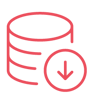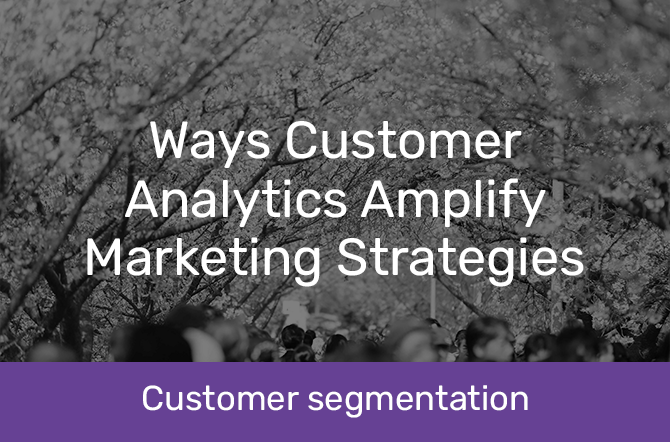Ways Customer Analytics Amplify Marketing Strategies
Use customer segmentation data to deepen audience connection
You’ve got a strategy, a detailed marketing plan all set for implementation. Effective plan delivery depends on near-perfect alignment with your customer.
A one-size-fits-all approach to marketing might have been viable decades ago, but it’s no longer an option. Customer targeting must be at the core of your marketing strategy – and customer analytics is how you will deliver.
Customer data are the lifeblood of effective modern marketing. As Peppers and Rogers say, treat different customers differently. Marketing cannot create differential customer experiences without customer segmentation.
Customer segmentation is your new best friend. It enables you to move towards an ideal state for marketing strategy. By grouping existing and potential customers based on shared characteristics, you will gain insights into their distinct needs, behaviours, and preferences.
In this article, we will delve into what customer segmentation is, how it works, why it’s important, and what marketing activations you can do with it.
Looking for a deeper understanding of customer segmentation? Download the Datamine Guide to Customer Segmentation. The guide sets out the distinct, practical phases required for introducing customer segmentation into your business.
 Data for customer segmentation
Data for customer segmentation
Datamine always starts work with the existing data already in your business. This is real, based on actual people who have purchased and gives us an outline customer profile. To get to a segmentation, additional data overlays like Retailwatch can add details such as demographic, psychographic, or market trends.
Accessing, aggregating, and analysing diverse data requires specialised expertise. A typical project starts with identifying the data sets and who owns each. Bringing them into a single customer analytical record and standardising formats is a prerequisite.
Here’s what you need to get your customer segmentation together:
1. Gather your variables
It is a good idea initially to factor in as many variables as you can. If, by chance, you don’t include the variables that have the most impact on the segmentation when you do the first run of the model, you could end up going down the wrong path.
Think about the variables that are important to your business. What do you currently report on or talk about when you describe your customers?
2. Profile
Profiling enables you to get an idea of how your variables look and whether any of them need special treatment. At this stage we may design a 'straw man' rough prototype for the first iteration of your segmentation.
This approach can shortcut the time needed to deliver your segmentation and allows later refinement.
3. Run the model
Segment your customer base and profile segments using the designed analytical model.
4. Tweak and refine
This includes adding, dropping or transforming variables if necessary. The model refinement will allow a review of clusters and segments as well as a quality assessment of the process before a second run of the model.
Working with Datamine gets you the necessary tools and resources to account for the optimal variables and unlock these insights. Contextualise your customer segmentation project as one valuable data analytics step towards delivering your marketing strategy. We can work with all your data remaining within your company's systems, if you choose.
At the end of the article, there’s a list of follow-up data analytics projects that you may consider using with your newly minted customer segmentation.
 What you can do with a customer segmentation
What you can do with a customer segmentation
Having the multifaceted, in-depth understanding that customer segmentation enables is transformational for a brand. The marketing team will now be able to foster deeper customer engagement using tailored campaigns, activations, and direct response copywriting focused on each segment, addressing their unique needs, preferences, and behaviours.
A side benefit that you will see after using your customer segmentation extensively is how easy it is to do new product development. Layering the deep insights and campaign response into each segment’s profile reinforces the commercial opportunities and can increase profitability.
A large FMCG chain worked with Datamine to analyse the top segment of their customer base in terms of spend and profitability. The customers in this segment were shown to be more likely than the overall base to be high-income earners, hold tertiary qualifications, and work in professional industries.
The FMCG organisation realised that while the segment only accounted for 8% of the total customer base, it accounted for 29% of its total customer spend. As these high-value customers were already spending, the retailer focused on providing more relevant and timely offers to this segment. As a result, the FMCG company achieved greater promotional response rates and a significant return on investment.
 Onwards...
Onwards...
Hooray, you’ve got a customer segmentation, and you’re using it.
Wave goodbye to one-size-fits-all marketing. With more personalised marketing comes an enhanced customer experience and better business outcomes.
Look into the longer term and start to plan deeper customer data analytics projects – which will further improve your campaign automation, data collection and storage and lead towards customer retention and loyalty marketing. All these refinements reinforce customer insights and further amplify the impact and effectiveness of marketing strategy.
Next, you might want to do a churn model to see if different segments have different drivers of churn. You could rebuild internal reporting to split and report by customer segments, or you could do customer lifetime value modelling to find where to focus your efforts. Your post-customer segmentation projects all depend on why you needed the segmentation in the first place.
Now, when can we get started?
Further reading
Read this article if you want to know more about what kinds of business problems analytics can solve: Can analytics solve my business problems?
An overview of what to expect when you work with Datamine to create a customer segmentation for your business: Customer segmentation.
Get an in-depth understanding of the steps required to implement customer segmentation: The Datamine Guide to Customer Segmentation.















































